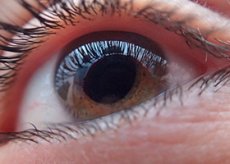Medical expert of the article
New publications
Glaucoma has been classified as an autoimmune pathology
Last reviewed: 02.07.2025

All iLive content is medically reviewed or fact checked to ensure as much factual accuracy as possible.
We have strict sourcing guidelines and only link to reputable media sites, academic research institutions and, whenever possible, medically peer reviewed studies. Note that the numbers in parentheses ([1], [2], etc.) are clickable links to these studies.
If you feel that any of our content is inaccurate, out-of-date, or otherwise questionable, please select it and press Ctrl + Enter.

American experts believe that glaucoma should be classified as an autoimmune pathology, which is characterized by the destruction of protein structures by the body.
The scientists' assertion may reverse all doctors' ideas about the treatment of glaucoma, since it is now necessary to use etiopathogenetic therapy first and foremost.
Currently, glaucoma is a diagnosis for tens of millions of people worldwide. Moreover, this pathology has been recognized as the main cause of vision loss in patients.
However, the etiological origin of the disease still remains an unsolved mystery for scientists. MIT experts have discovered that the basis of glaucoma can be laid by an uncontrolled reaction of the human immune system. After conducting studies on rodents, scientists have proven that T-lymphocytes in the body are responsible for irreversible damaging processes in the retina. And then there’s more: T-cells attack neural proteins of the retina when the immune system encounters certain types of microbes. Under the influence of an infectious process, the immune defense literally “goes crazy”, taking its own proteins for strangers that need to be fought.
"Our work has shown that glaucoma treatment has been fundamentally wrong up to now. Studying the role of microbes in the development of the disease will help to block and detect glaucoma in a timely manner in the future," says biologist Dr. Zhianshu Chen.
The main role in the development of the disease is given to the increase in intraocular pressure, which is quite typical for elderly people. The problem is initially hidden: a person becomes aware of the problem only when every second ganglion structure is irreversibly damaged.
Nowadays, glaucoma is treated by controlling intraocular pressure. However, this approach is not always successful: many patients experience further deterioration of the problem even with normal IOP values.
The scientists explain: "We assumed that there must be some reason for the instability of intraocular pressure. The first thing we thought of was an autoimmune reaction."
In order to test the hypothesis, the specialists studied the retina of sick rodents: first of all, they were interested in the presence of immunocytes. As it turned out, such cells were present in large quantities in the tissues. The scientists found this strange, because the protective membrane of the retina should not have let them into the internal structures. It was then discovered that high intraocular pressure gives the "green light" for the passage of T-cells, which enter inside and affect the heat shock proteins responsible for the stress and traumatic response.
Why does this happen? Scientists have found out that such lymphocytes have previously been “acquainted” with heat shock proteins, but they were of microbial origin. If we explain it differently, it turns out that immune cells have already entered into a fight with microbes that have a structurally similar protein. And now they have begun to attack normal proteins, because they “remember” them as threatening agents. Specialists call this reaction a cross-reaction.
So which microbe is "guilty" of developing the wrong reaction? Scientists cannot answer this question yet.
Details of the discovery can be found in the Nature Communication article.


 [
[